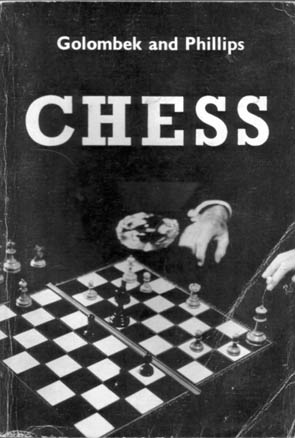
Above is the front cover of the 1964 paperback edition (depicting the famous ‘Indian problem’).
Edward Winter
A puzzle from pages 34-35 of The Week-End Problems Book by Hubert Phillips (London, 1932):
‘At the Lvov Chess Tournament in 19— there were ten competitors, each of whom played each of the others once. One point was awarded for a win and half a point for a draw. The competitors finished in the following order:
1. Casabianca
2. Alasker
3. Steinisch
4. Spilsbury
5. M’Bang M’Wang
6. Morfew
7. Snooper
8. Algonquin
9. Titterdown
10. Puschowski.Puschowski drew four of his games. Five competitors did not lose a game at all. No-one fared worse, against any particular competitor, than any competitor placed lower in the final table.
What was the result of the games (1) between Alasker and Snooper; (2) between Steinisch and Morfew; (3) between Casabianca and M’Bang M’Wang?’
(2815)
The solution is given at the end of the present article.
An old puzzle:
‘A game of living chess has been organized for charity and our village has undertaken to supply the white pieces. The following constitute the team: Mr King, Mr Queen, Mr and Mrs Rook, Mr and Mrs Bishop, Mr and Mrs Knight (pieces); Kittie King, Quentin Queen, Ralph and Rachel Rook, Bertie and Belinda Bishop, Kenneth and Kathleen Knight (pawns).
None of these has been assigned a position appropriate to his or her name. Thus Mr Queen is not at queen’s square; nor is Ralph Rook at KR2 or QR2.
When I tried to find out how the players are placed at the beginning of the game, I was given the following information:
Kathleen stands two places to the left of Rachel. Belinda is a knight’s move from Mr Rook. Mrs Bishop is a knight’s move from her niece. Ralph is a knight’s move from Mrs Knight. Mr and Mrs Knight stand side by side, so do Mr and Mrs Bishop. Kenneth is a knight’s move from his father. Mr Queen, who is a knight’s move from Ralph, has a little girl in front of him. Bertie is a knight’s move from Mrs Rook, who stands next to her sister. Mr Rook is a knight’s move from Quentin. Ralph has a girl at his right hand. Belinda has a boy at hers.
State (or show diagrammatically) how the 16 players are placed.’
(2826)
For the solution, see the end of the present article.
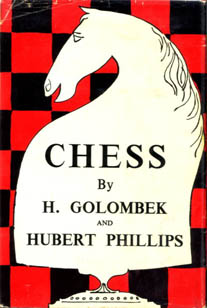
In 1959 a 434-page work, Chess by H. Golombek and H. Phillips, was published at 35 shillings by H.F. & G. Witherby Ltd., London as the third volume in Phillips’ series ‘Compendium of Indoor Games’. It was re-issued as a paperback in 1964, the year after Thomas Y. Crowell Company, New York had brought out a US edition.
The critics received the work coolly. On page 182 of the June 1959 BCM D.J. Morgan (an excellent reviewer who never wrote a chess book himself) described it as ‘a big, highly-priced and comprehensive guide to the game’ which was ‘just another mechanical compilation’. Believing in plain talk and ignoring the fact that he and Golombek were half of the BCM’s editorial team, Morgan expressed his ‘disappointment with a book which has the appearance of having been all too easy in the making’.
Up in Sutton Coldfield, B.H. Wood (CHESS, July 1959, inside front cover) was hardly more impressed:
‘This book has little to commend it except its size. It aims to cater for the absolute beginner in the opening paragraphs and for near-masters later; but we could name many alternative groups of, say, three books which cover the same ground better and cost less in the aggregate.
At the same time, if you do like everything under one cover and don’t mind pools of empty space, this is a book as reliable as all-embracing, containing oceans of good chess.’

Above is the front cover of the 1964 paperback edition (depicting the famous ‘Indian problem’).
In his Foreword Phillips explained why he had not prepared the book alone:
‘My original intention was to write a volume on chess which would be adequate from the beginner’s point of view, though it might not contain much that was original in the way of comment or analysis. But, while I can claim to be an authority on most of the games included in my other volumes (and, indeed, the inventor of many of them) I cannot claim, in the same sense, to be an authority on chess.’
As will become evident below, Phillips (then in his late sixties) was being modest about his familiarity with the game. His writing style and outlook were so different from Golombek’s that it is hard to imagine how a co-production could have worked satisfactorily, and hard too not to regret that Phillips never wrote a chess monograph of his own (with, perhaps, some behind-the-scenes technical assistance). Certainly the desiccated style of Chess bears the stamp of Golombek. The book is seldom referred to today and, indeed, Phillips’ name has never been closely associated with chess; when he died, in 1964, the BCM, for instance, carried no obituary of him, even though he was a prominent writer and broadcaster whose non-chess works (most notably his puzzle books) often had considerable chess content. His autobiography, published in 1960, had, moreover, revealed the extent of his love of chess: ‘it’s my favourite game, and always has been’.
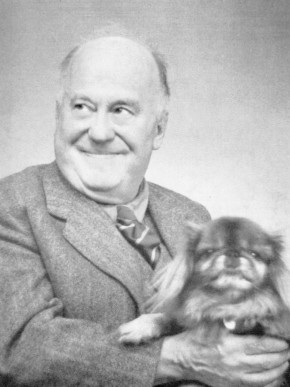
Hubert Phillips
As a ‘puzzlist’, Hubert Phillips had few rivals. He penned dozens
of quiz books, and in The Week-end Problems Book (London,
1932) he included a 29-page chapter on ‘Chess Problems’ (forced
mates and retrograde analysis). He wrote with particular authority
on card games, and in 1957 he edited the English edition of Culbertson’s
Card Games Complete with Official Rules. One of his
best-sellers was The Pan Book of Card Games. On bridge he
was notably prolific and co-authored books with Terence Reese.
Phillips captained the English contract bridge team in 1937 and
1938 and was at one time President of the National Bridge
Association and the editor of British Bridge World. In
1960 he brought out a 224-page monograph Profitable Poker.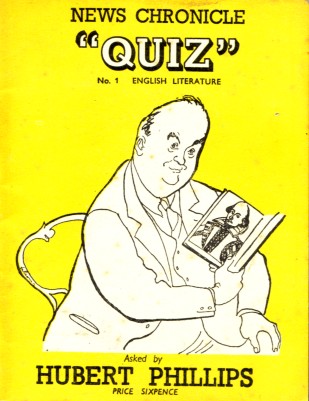
His books for children included The Playtime Omnibus (London, 1933), ‘a miscellany for young people’ in which he revelled in acrostagrams, cryptograms, duograms, skiagrams, tetragrams and so much else in an anthology which, even today, provides an entertaining challenge to readers of any age. A later compendium, The Hubert Phillips Annual 1951, was, in his view at the time, the best thing he had done. His versatility was astonishing. In 1951 he wrote and published (‘A Hubert Phillips Production’) Charles, comprising potted biographies of celebrated figures so named, from the Holy Roman Empire on until ‘Prince Charles of Great Britain’ (born 1948). He wrote fiction, including over two hundred crime stories under pseudonyms. He was a poet, specializing in light compositions, and in 1960 he brought out an anthology, Selected Verse. For eight years he was ‘Caliban’ in the New Statesman, and he conducted a satirical column ‘Dogberry’ in the News Chronicle for over 20 years. He thrived on games, riddles, enigmas, codes, crosswords and every kind of word-game imaginable, arithmetical tricks, quirks of logic and general knowledge quizzes. One of his collections of crossword puzzles was published by Penguin in 1947 under the title Chipwinkle and began with an ingenious spoof biography of Eugene Chipwinkle, ‘the father of the crossword’. His Foreword to Who Wrote That?, from the same publisher the following year, expressed a principle sometimes disregarded today: ‘I have always maintained that there is no point in any kind of quiz unless the questions asked are of interest in themselves.’
Hubert Phillips (1891-1964) gained a first-class degree in history and economics at Merton College, Oxford, just prior to the Great War. He was wounded in action not long before the Armistice. His academic career included, from 1919 to 1924, the post of Head of the Department of Economics at Bristol University, and his interest in politics led to his being Secretary and Adviser to the Liberal Parliamentary Party from 1927 to 1929. Later he turned to journalism and, later still, to both radio and television, becoming, in particular, a regular contestant on BBC Radio’s Round Britain Quiz, a programme which it is tempting to describe as ‘highbrow’, except that on page 164 of his book Party Games (London, 1952) Phillips wrote:
‘I coined the word “mezzobrow” about 30 years ago to designate the many people of the highest intelligence who enjoy such things as crosswords, chess problems, inferential puzzles and parlour games. They differ from “highbrows” in that no self-respecting highbrow solves puzzles or plays parlour games at all. To do so would sadly diminish his status in the eyes of his associates.’
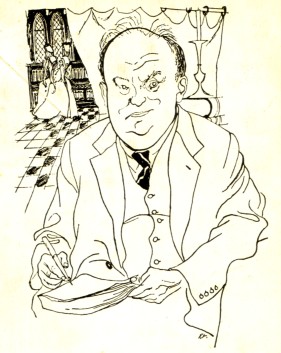
Hubert Phillips
The extent of Phillips’ devotion to chess and his ability, too, to curb the passion were revealed by his ‘discursive autobiography’ Journey to Nowhere (London, 1960). About his university days he wrote on pages 107-108:
‘I had made up my mind (before I went up) that I’d play chess for Oxford against Cambridge.
This ambition, at least, I could have realized without any difficulty. But it went west, along with the others.
“But, excuse me one moment”, said a friend when, years later, I was making this point, “what makes you suppose that you could have played chess for Oxford?”
“That’s easily answered. Comparison of form. In my last year there was no competition for the Oxford County Championship. Instead, there was held a sort of reserve championship, for which, I believe, all the University players entered. I entered too, and took second place: half a point behind my friend George Carruthers (I drew my game against him). And do you know why I didn’t take first place?”
“Of course I don’t.”
“Because of my congenital soft-heartedness. I had won most of the 11 games I played by making my initial moves very quickly. Plonk; Plonk; down went my clock. After eight moves or so, I was playing almost wholly in my opponent’s time. An advantage so gained tells increasingly in one’s favour. One’s opponent finds, at a critical moment, that he has almost no time left and, almost invariably, blunders.”
“How unsportsmanlike, Hubert.”
“Unsportsmanlike? Fiddlesticks. ... Anyway, my last game was against a poorish player who knew all about my spoiling tactics. And, when we met, the first thing he asked me was whether I’d mind not having clocks. He said they put him off.”
“And you agreed?”
“Of course. I said Yes, as I’ve often said Yes when I ought to have said No. For one thing, to waive a rule isn’t fair to other competitors. ... To cut a long story short, I lost the game through sheer boredom. There were times when I thought my opponent was never going to move at all. And that was the only game I lost.”
“But I’m still puzzled. Surely you’d met all those other players before the tournament began?”
“Not at all. I’d only met George Carruthers. You see, I never joined the University Chess Club.”
“Whyever not?”
“I thought it a waste of time. I’d found so many other amusing things to do.”
“Wasn’t that rather resented by the chess people?”
“Yes, I think it was. They regarded me as a renegade. But who wants to go to Oxford – Oxford, where the whole panorama of the mind is deployed for one’s enjoyment – to spend night after night playing chess? It’s my favourite game, and always has been. Why, I’m writing a book on chess at this very moment; I mean to say, we are, Harry Golombek and I. But, at Oxford, chess – like so many other enjoyments – should surely be just one smallish element of one’s personal kaleidoscope. That’s how I saw the thing, anyway; that’s how I see it still.”
“For once”, said she, “I think that you were right.”’
Phillips’ memoirs contained other references to Carruthers. From pages 110-111:
‘George Carruthers was reading chemistry. I was drawn to him not only by our common interest in chess – until I got to know more people we played a game or two several nights a week – by his modesty; his self-effacing manner; and his solitariness, which paralleled my own. ... Most men of our year weren’t interested in chemistry, just as they weren’t interested in chess; but I knew just enough about chemistry to enjoy discussing it with Carruthers, and just enough about chess to give him a good game. He was better than I, but only fractionally better; he won maybe three games out of five. Every Sunday morning we paced round Addison’s Walk, playing a game “blindfold”.
... George Carruthers could just get by. He had, I think, about £120 a year; he must have been the hardest-up man in college. He had dark poky rooms in one of the Mob Quad attics, furnished only with half a dozen textbooks and his chessboard. I often wondered why he had bothered to come to Oxford. I was still his one intimate friend in Merton at the end of his fourth year.
I was very fond of him. He had a crooked nose; a mild sense of humour; an air of self-deprecation. There was no hint in his speech or bearing of his native Camberwell. Night after night he would come sidling into my room like a crab, in the hope that I’d be free for chess. If I had other friends there he would seldom condescend to stay. He took a second in chemistry; a good enough degree to give him some sort of start in life. That was in the summer of ’14. Had he waited for the war, and joined up, he’d have had, like the rest of us, an odds on chance of survival. But he wasn’t even vouchsafed that chance. A few weeks before the war began he died of erysipelas.
What a sad, wasted life, I thought, as I read the letter from Carruthers’ friend and former schoolfellow, Bryant of Corpus. At 22, one did not expect one’s contemporaries to die. Challenge and adventure, surely, lay ahead of us; all the fun and games in the world.
And a few weeks later most of us were in khaki.’
George Carruthers was a member of the Oxford University team against Cambridge University in 1912, 1913, and 1914, with a score of two wins and a loss. (Source: page 354 of A Century of British Chess by P.W. Sergeant.) The defeat was published on pages 284-285 of the July 1914 Chess Amateur.
On page 162 of his autobiography Phillips wrote concerning his fourth year at Oxford:
‘I played bridge about four nights a week and, returning to an earlier and more exacting love, played also a good deal of chess. George Carruthers had not yet taken his Finals. By this time a pillar of the University Chess Club, which – sensibly, I think – I had declined to join, he introduced me to other players of his calibre: I remember particularly the hospitable Davies of Pembroke, in whose rooms we foregathered. Several Merton men played chess of a sort; in my last term it became, for a short time, a minor cult in the college. I organized a team of ten or 12 players – there may even have been more – and we challenged Oxford City to a match. The City club, although warned that we were, to put it mildly, weak, wasn’t taking any chances. They fielded a strong side, including several county players. This contest, which I still recall with amusement, was not so much a match as a massacre. Carruthers won his game on Board 1; I drew mine on Board 2. The rest of the team were sitting ducks. Before I had made my fourth move one of my players had been mated. “Do you really mean”, he was asking plaintively, “that we only play one game?” After that, Merton’s enthusiasm for chess suffered something of a setback.’
Page 241 described activity during his military training:
‘My series of elementary war games, concluding with the last full-scale exercise, served their purpose, I think. Morale was high; we were not unhopeful that reports of our preparedness for action would filter through to the War Office. But, as usual, nothing happened. We were thrust back again into the familiar slough of uncertainty and dither.
The effort that I put into working out my games was not, however, wholly wasted. I have recently popularized in two of my books – my Penguin Hoyle and Games of Skill for Two – varieties of Kriegsspiel which had their origin in the problems which I sought to solve at Welbeck.
Indeed, it was here, under canvas, that one of my games – a modification of chess Kriegsspiel – was played for the first time. Several officers of my unit were interested in chess; eight or nine of us in all. We devised a chess game where each player makes his moves in the dark, under the superintendence of an umpire who can, of course, see both boards. But it differs from chess Kriegsspiel, as normally played, in that – before the game begins – each player sets up his pieces, on his own half of the board, anywhere he pleases. All the information given him is the position of his opponent’s king. One would imagine that such a game would be a pure gamble, and certainly there is in it, as in war, an element of chance. A haphazard move by a scatter-brained opponent may polish off one’s queen. But the element of luck is minute compared with the element of skill; the better player will win, and will win in terms of a well-planned combination, nine times out of ten.’
Our collection contains half a dozen books inscribed by Hubert Phillips, including the following, on yet another of his interests and specialities:
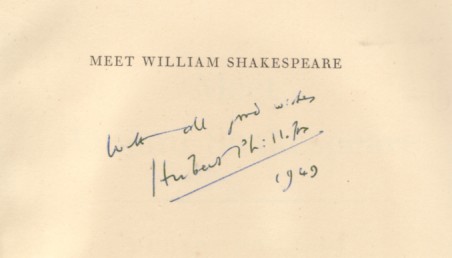
The present item ends with another of his puzzles:
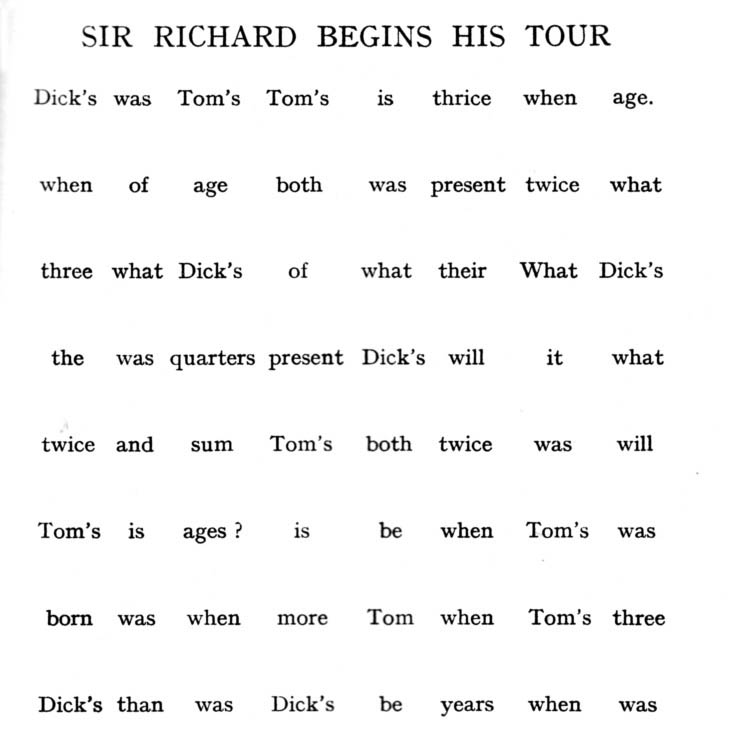
The solution is given in C.N. 3565 below.
(3551)
Despite being nicknamed the ‘One Man Brains Trust’, Phillips was
unassuming and wrote in the Foreword to Hubert Phillips Asks
You (London, 1960) that erudition was ‘about the last
quality to which I can properly lay claim’. Readers can judge for
themselves, for many of his books are still in print, while others
are available at low cost second-hand (although some of his
earlier works are now very scarce). Below are six further Phillips
problems with a chess theme, and it is worth noting first a remark
he made on page ix of his book Brush Up Your Wits (London,
1936):
‘The problem-maker’s art is to make what is essentially simple look difficult; the problem-solver’s art is to strip the composition of its pretence and, by bringing a trained faculty to bear, to seek out, with as little wasted effort as possible, the simple elements that constitute the “mystery”.’
Whether that applies to all the puzzles below (the fifth one may be found particularly difficult) is another point on which readers will have their own views.
1. ‘The Chess Tournament
“For the purposes of our chess tournament”, said Woodpusher, “we divided our players into two groups. Each player played two games against each other player in his group. That did away with all possibility of unfairness in regard to the opening move.”
“There must have been a large number of games played altogether.”
“Exactly 200”, said Woodpusher.
How many players in all took part in the tournament?’
Source: Problem Omnibus Volume 1 by H. Phillips (London, 1960), page 73.
For the solution click here.
2. ‘Chess
Representatives of Doomshire and Gloomshire met to play chess over 100 boards. Both men and women players took part; each county producing more than 50 men players.
More women played for Gloomshire than for Doomshire.
It was arranged that, so far as possible, men should be matched against men and women against women. This meant that there were only mixed matches (men versus women) to the extent to which the number of men players representing Doomshire exceeded the number of men representing Gloomshire.
On the boards where men were matched against men, Doomshire won three matches out of five. On the boards where women were matched against women, Gloomshire won two matches out of three. And on the boards where Doomshire’s surplus men met Gloomshire’s surplus women, the Doomshire players won two-thirds of the matches. No game ended in a draw. The result was a very narrow win for Doomshire by 51 games to 49.
How many men played for Doomshire?’
Sources: The Hubert Phillips Annual 1951 (London, 1950), page 160 and Problem Omnibus Volume 1 by H. Phillips (London, 1960), page 87.
For the solution click here.
3. ‘Giuoco Piano
“I’m competing”, said Gambitt, “in the Minor Open Reserves at Prawnville.”
“Oh yes? Do you expect to win a prize?”
“Can’t say. There are four prizes altogether.”
“And how many competitors?”
“Twelve. But of course they may divide one or more of the prizes. Scoring is on the usual plan, you see: one point for a win, half a point for a draw. One year all 12 competitors scored five and a half points; the four prizes were divided among them. Last year three competitors tied for first place – they shared the first three prizes – then came three more competitors with equal points; they divided the fourth place. So, you see, there’s always a chance.”
“If I were you, Gambitt”, I said, “I wouldn’t be too ambitious. Aim at scoring just enough points to be certain of at least a share in a prize.”
“Good idea”, said Gambitt, “but how many points is that?”
How many points is it?’
Source: Problem Omnibus Volume 1 by H. Phillips (London, 1960), pages 114-115.
For the solution click here.
4. ‘Wrong number
When Mrs Orme went into the nursery the children were playing with the chessmen.
“What are you doing, dears?”
“Why”, said Ronnie, “Clara and I were talking about our phone number. Clara says it has 32 pairs of factors.”
“So it has”, said Mrs Orme, who had worked that out herself. “But why the chessmen?”
“There are 32 of those”, said Ronnie. “I was putting one back in the box as I worked each pair of factors out. But, Mummy, there’s something wrong. I’ve finished my calculations, and there are still these eight black pawns.”
Mrs Orme took a hasty glance at his notebook. “Ronnie”, she said, “you are a duffer. You’ve got the number wrong.”
“Got the number wrong?” echoed Ronnie.
“Of course. You wouldn’t call yourself Rome, now would you?”
What is the Ormes’s phone number?’
Source: Problem Omnibus Volume 1 by H. Phillips (London, 1960), pages 119-120.
For the solution click here.
5. ‘Secret Service
During the recent rebellion in Jehannum, a native runner was brought into the small fortified station of Ustaraf, which was occupied by a detachment of the Wellshires, and was found to be carrying in the folds of his pagri a tightly-folded paper, which he gave up without demur. The only writing on it was the following:
Major ffeatherstonehaugh-Haugh, a keen but incompetent chessplayer, who was in command, was greatly interested, and guessed that it must be a chess problem sent to him by Legge-Pullar, who had taught him the rudiments of the game, and whom he knew to be on Intelligence duty somewhere in the interior. He therefore set himself to solve the problem, which seemed to be rather unusual; so unusual, in fact, that three days later he had made nothing of it when another runner was brought in, bearing a paper on which the following was written:
AHAMIT TOT THAR TINALI EFAI ETCHL KRPS SOTTURA EPASTAI APONRR NIWDSIN IHLGT.
Major ffeatherstonehaugh-Haugh regrets he is unable to make head or tail of this, and begs you to translate it for him, as he is not familiar with any Oriental language.’
Source: Caliban’s Problem Book by H. Phillips (‘Caliban’), S.T. Shovelton and G. Struan Marshall (London, 1933), pages 59-60.
For the solution click here.
6. ‘Eques enucleat castaneam
When I met Professor Graeme Atta the other day he showed me an interesting old manuscript book which he had come across when he was browsing among the second-hand bookstalls in Charing Cross Road. The book plate was almost indecipherable, but as far as I could make out bore the inscription “ex libris Samueli Loyd”. One of the pages contained a curious Latin cryptogram which seems to be of more than passing interest. Here is a copy of it:
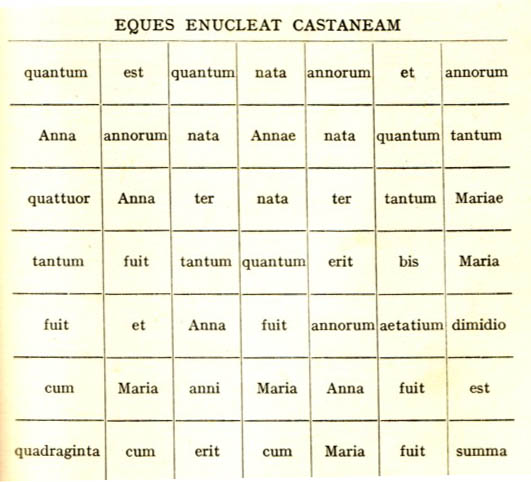
Quot annos nata est Maria?’
Source: Caliban’s Problem Book by H. Phillips (‘Caliban’), S.T. Shovelton and G. Struan Marshall (London, 1933), page 127.
For the solution click here.
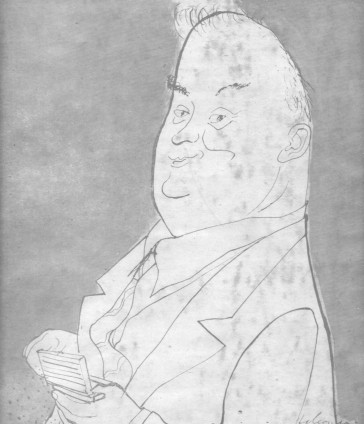
Hubert Phillips
C.N. 3551 quoted Phillips’ remarks about his adaptation of Kriegspiel (he preferred the alternative spelling Kriegsspiel), and we shall give now a game from his book The Penguin Hoyle (Harmondsworth, 1958). First, though, from page vii comes this further comment on his variant:
‘Here is a game which, once you have mastered its rules, can be played with as much enjoyment by novices as by those who have devoted years to the study of chess theory. I have played, or umpired, hundreds of games of Kriegsspiel, and can’t recall one that wasn’t exciting as well as being good for a laugh. There’s an element of luck in the game, but a great deal of skill too; the better of two players will win nine times out of ten.’
Page 272 had a game which ‘was given to me by the Umpire who gleefully recorded the moves’:
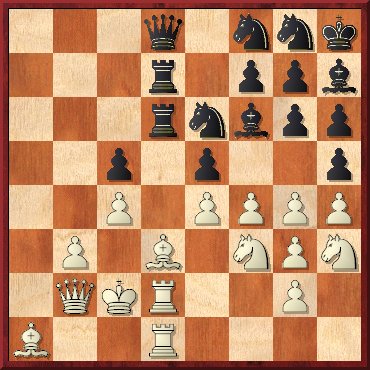
1 g5 hxg5 2 hxg5 Bxg5 3 fxg5 Nxg5 4 Nhxg5 Qxg5 (‘Rash.’) 5 Nxg5 f6 6 Rf1 fxg5 7 Rdf2 g4 8 Rxf8 Rf6 9 Ra8 (‘Exploratory’) 9...Rdf7 10 Qxe5 Rf8 11 Rxf8 Rxf8 12 Rxf8 h4 13 gxh4 g3
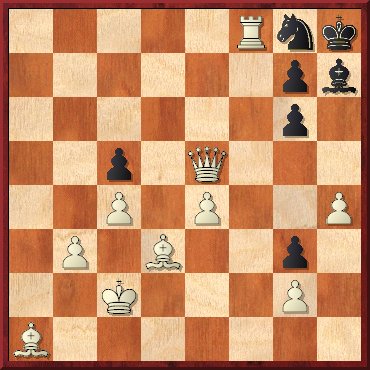
‘White, who has a fair idea of the position, can now of course mate by Qxg7. But White did not want to jeopardize his queen; he decided to play Bg7, hoping that this might effect mate. So, to make way for the bishop, he played 14 Qg5. Stalemate.’
For further information on Kriegspiel and Phillips, see the
entry on pages 165-169 of The Encyclopedia of Chess Variants
by D.B. Pritchard (Godalming, 1994) and, in particular, the list
of variants at the end of that entry (e.g. Welbeck Kriegspiel).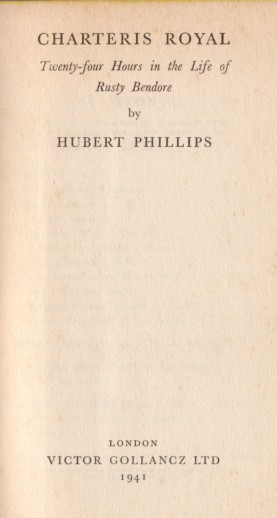
Finally in this miscellany, page 534 of Chess An Annotated Bibliography of Works Published in the English Language 1850-1968 by Douglas A. Betts (Boston, 1974) listed, without any details, a second book by Hubert Phillips (i.e. in addition to the co-production with Golombek): a work of fiction entitled Charteris Royal (London, 1941). However, Betts had commented in his introduction (page xiv) that for entries in the Bibliography’s fiction section ‘the chess content may be minimal’, and we note that such is indeed the case with Charteris Royal. A 253-page novel, it contains passing references to chess, but the only passage of any length or substance is on page 46:
‘Chaim was 57. A mathematician of exceptional calibre, his eyesight had failed him while he was still an undergraduate at Cambridge. He took refuge for a few years in a College tutorship; but when, on his father’s death, he came into a small private income, he gave up a task for which he felt himself ill-equipped and found an outlet for his energies in chess.
Within four or five years, he was admitted to the ranks of the masters. He won the tournament at San Marino, a few years before the war [i.e. the First World War], and took third place in the big Congress at Kronsberg, where he was led only by Capablanca and Tarrasch. His reputation, in this exclusive field, seemed assured.
Now, however, came the war; and with it a fresh orientation of Chaim’s interests. Like all great chessplayers, he had studied the technique of analysis, as a thing apart from the mere trappings of the game. His mind, as he had once explained to Rusty, functioned as a sort of prism, breaking up any problem, more or less automatically, into its logical constituents.’
(3555)
Page 115 of CHESS, May 1941 had a feature entitled ‘A new thriller of peculiar interest’. The first paragraph:
‘Charteris Royal by Hubert Phillips (Victor Gollancz, 7s. 6d.) is a typical modern thriller. Crowded with fantastic action, hurtling along at a break-neck pace from the first page to the last, it grips in spite of its rather slapdash characterization; it has all the defects but all the attractiveness of its type. A fraternity of brilliant British dilettantes wrecks the plans of a powerful and dangerous Nazi spy organization.’
Hubert Phillips’ solution to his puzzle entitled ‘Sir Richard begins his tour’ (C.N. 3551 above):
‘From the arrangement of the words of the problem and the hint in the title it should be clear that this is a problem based on the knight’s move in chess. The first word is at the top left-hand corner, and the question reads:
“Dick’s age is twice what Tom’s was when Dick’s was twice what Tom’s was when Dick’s was three years more than Tom’s was when Dick’s was both thrice what it was when Tom was born and three quarters of Tom’s present age. What will Tom’s be when Dick’s is twice what Tom’s will be when Dick’s is the sum of both their present ages?”
The answer to the question is found by assuming that the difference in the ages is x. Then the statement concerning the ages leads at once to the equation
3x = ¾ (8x – 12 – x).
Therefore x = 4, Tom’s age is 16 and Dick’s age is 20. Tom will be 32 when Dick is 36, and when Dick is 64 Tom will be 60.
The solution of the problem is therefore 60 years.’
Source: page 81 and pages 231-232 of Caliban’s Problem Book by Hubert Phillips (‘Caliban’), S.T. Shovelton and G. Struan Marshall (London, 1933).
(3565)
We commented in C.N. 3551 that Hubert Phillips ‘never wrote a chess monograph of his own’. That is certainly true, but it should have been added that his book Indoor Games For Two Players (London, 1961) had an extensive chapter on chess, followed by chapters on anagram chess, Welbeck chess, chess war games, draughts, go-bang, go and backgammon. On page 11 Phillips commented:
‘The game of chess must, I think, have pride of place in this collection of indoor games. No other indoor game is played with the same expertise and concentration throughout the civilized world. No other game has anything approaching its vast literature ...’
(3576)
A brief entry on page 78 of Merton College Register 1900-1964 (Oxford, 1964):
‘Carruthers, George – b. 29 July 1891. Educ. Wilson’s G.S., Camberwell; Merton 1910-13; Postmaster; 2nd Chem. and B.A. 1913. Deceased.’
The solution to the problem in C.N. 2815, as provided on page 204 of H. Phillips’ The Week-End Problems Book:
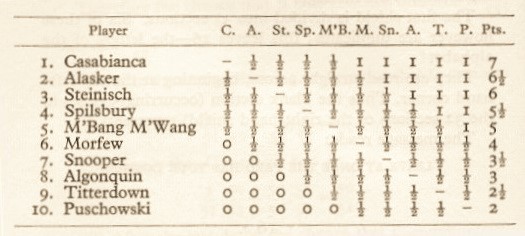
The solution to the living chess problem in C.N. 2826 was given in C.N. 2835, which stated that the puzzle had appeared on page 484 of the December 1934 BCM, taken from The Sphinx Problem Book by Hubert Phillips. When supplying the solution (January 1935 issue, page 2) the BCM reported that only two readers had found it. The winner of the contest was J.M. Aitken.

To the Chess Notes main page.
To the Archives for other feature articles.
Copyright: Edward Winter. All rights reserved.